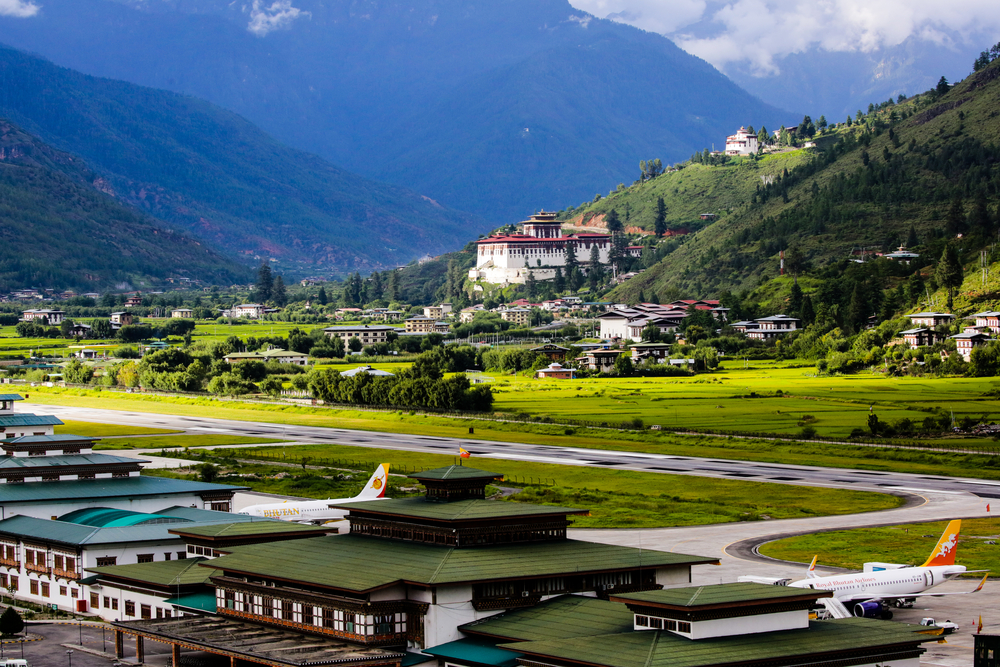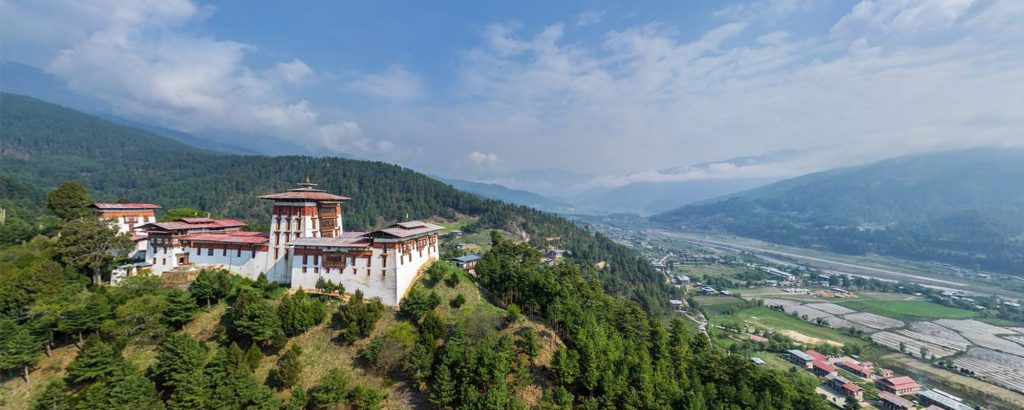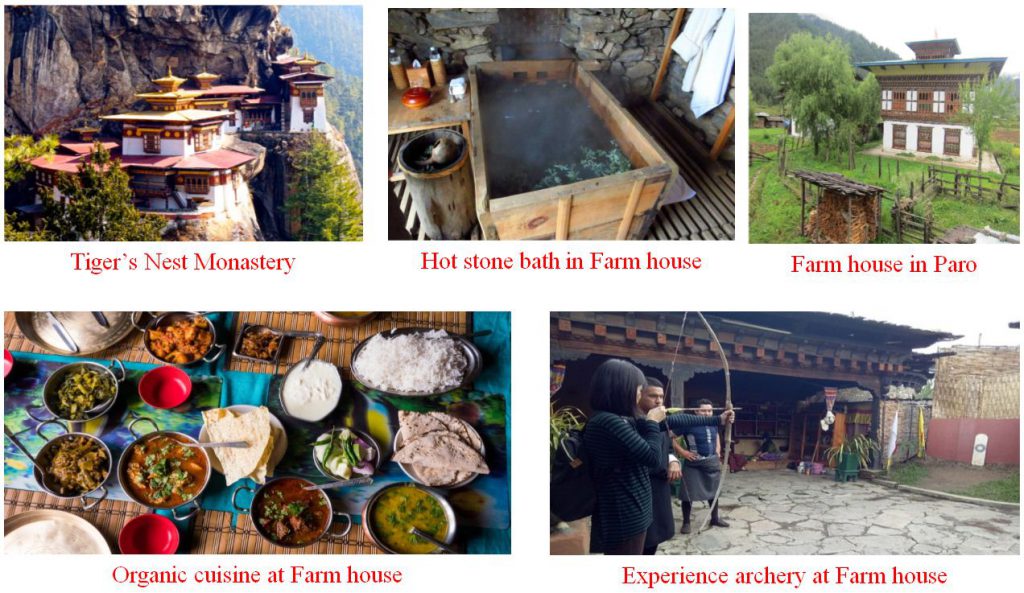
Duration: 14 day and 13 nights
Hightlight: During the trek an entire day will be dedicated to visiting some of the more picturesque lakes and resting. The trail also takes you through several Bhutanese villages so you can get a good idea of traditional Bhutanese village life as you make your way back from the lakes.
After flying into Bhutan you will be received by the representative of Yelha Bhutan Tours and Travels (Bhutan tour operator) who will be your Bhutan travel guide throughout your tour.

After meeting with the guide and driver, drive to hotel and visit Paro Rinpung dzong, built in 1645 to defend the valley against Tibetan invaders. The Dzong is now being used as an administration center and school for
monks. Visit Taa dzong which was built in the 17th century as a watchtower for the Paro Dzong. This dzong was converted into the National museum in 1967.
Place to visit:
From Thimphu you will drive for 45km to the starting point of the trek. Today’s trail is all through terraced fields and conifers vegetation. The trek starts from beautiful Genekha village (2800 m) with a short descent down to the river. From here – after crossing the river- you start climbing till you reach a huge rock platform at 3350m from where you have a picturesque view of the valley below. After another 2 hours you reach Gur amid yak pastures at 3290m.
While trekking across the ridges, one enjoys beauty of the rugged mountains vegetation. The path winds through flowers and wild asparagus (in spring). The meadows are refreshing and inspiring. The first pass symbolize by a huge cairn gives a spectacular view of Kanchenjunga (Sikkim) and more or less all the Bhu-tanese Himalayan peaks. Once descended into the Lamatama valley you ascend gradually through the valley passing some yak herder huts till you reach Utsho Lake where golden trouts are in abundance. The campsite is right next to the lake at 4100.
Today you will have a day excursion to Sertsho and Jagetsho lakes. Hike up hill to Sertsho Lake is easy and interesting after wards walk over a small ridge and then down to Jagetsho Lake. Or you can also attempt to climb the Aum Jomo, a 5000m peak if there is no snow on the Jumo Mountain. From the summit you can have spectacular views around the Dagala range during the clear weather. Return to the camp by dusk and prepare for the next day.
The trail along the western side of the Dalatsho up to a saddle at 4520m from where you can have majestic view of Himalayan peaks during descent. This point is around 4460m. The mountain peaks include Everest (Nepal), Kanchenjunga (Sikkim), Jumolhari, Jitchu Drake, Tshering Gang, Khangbum, Masa Gang , Tshenda Gang and Gangche Ta. If you want even better view, you can climb a peak close to the saddle with an alti-tude of 4720m. From the saddle the path descends, passing some yak herder huts to Docha Chu. You follow the river for a while, but stay higher up on the slop to reach Pankha with some ups and down on the way. Camp at Pankha at 4000m.
Optional Note: If you are trekking in spring time, the Pankha camp will not have drinking water. So you can hike about another 1 ½ hours further from Pankha for your tonight’s camp. And this can also make your last day easier and bit shorter too.
You will start early today. This day entails the crossing of several passes, each one more impressive than the other. Search for different varieties of Blue Poppy (June-July) and mountain birds. After crossing the last small ridge, you will gradually decent toward the main Junction pass, which crisscrosses each other for the trail towards Chamgang, Talekha, Ganekha and Gaselo. So just make a very short descent on your right, and then take left horizontally for few minutes towards Chamgang trail with about three to four small ridges to go up and down before you begin a steep downhill hike until you reach a Chamgang village. You will finally arrive at the motor able road where transport will be awaiting to transfer you to Thimphu for overnight in ho-tel.
After breakfast we will visit Buddha Dordenma (the larges Buddha Statue at Kuenselphodrang), Memorial stupa, Tashi Chhodzong Changangkha temple. Then after the lunch, visit Institute of Zorig Chusum, CHang-zamtog National weaving center, and week end market which is called Centenary Farmer’s Market.
Place to visit:
After breakfast, travel to Punakha through Dochula Pass (3,088m/10,130ft). Visit the beautiful 108 stupas built on the hill by Her Majesty Ashi Dorji Wangmo for the security and wellbeing of His Majesty the King of Bhutan.

Travel onto Punakha, and visit Punakha Dzong, located on the island of the Pho – Chu (male) riv-er and the Mochu (female) river.
Place to visit:
After breakfast, drives to Bumthang via Pelela pass at the altitude of 3,150 meters, a wonderful opportunity for photographs. En-route stops at Chummy village to visit yathra weaving central. Which Yathra are made into colorful scarves, bags, blankets and sweater. Continue drive to Bumthang and check into the hotel and take a rest.
Whole day sightseeing in Bumthang, which is the most beautiful place in Bhutan and we normally say, “Switzerland of Bhutan”. In the morning visit the Jakar Dzong. The fortress is now used as an administra-tive center of the valley and summer residence of monks. Chakhar Lhakhang (Iron Castle). It is the site of the palace of the Indian King Sendha Gyab also known as Sindhu Raja.

Also visit Kurjey Lhakhang (Kurjey means, “Body imprint”). The temple to the right was built by Minjur Tempa in 1652. It was built around the cave in which Guru Rinpoche meditated and left his body imprint.Jambay lhakhang, built in the 7th century by the King Songtsen Goempo of Tibet. In his effort to propagate Buddhism he had a plan to build a total of 108 temples in Tibet and neighbouring kingdoms. Then visit small Bumthang town and take leisure time by walking through villages nearby.
Place to visit:
After breakfast drive to Trongsa and visit Trongsa Dzong, seat of the district administration, built in 1648 Then drive to Phobjikha (lunch on the way). It is a bowl-shape valley on the western slopes of Black Moun-tain. Visit Gantey Goenpa – This monastery is a major attraction with an old monastery date back to the 16 century. Later start short short hike from Gangtey Goenpa to beautiful phobjikha valley.
Place to visit:
Today after well rest we will drive to Paro. After reahing Paro, check into the hotel and in the evening, visit Paro Rinpung dzong, built in 1645 to defend the valley against Tibetan invaders. The Dzong is now be-ing used as an administration center and school for monks.
Visit Taa dzong which was built in the 17th cen-tury as a watchtower for the Paro Dzong. This dzong was converted into the National museum in 1967 and is filled with antique thankha paintings, textiles, weapons and armour.
Today after well rest we will drive to Paro. After reahing Paro, check into the hotel and in the evening, visit Paro Rinpung dzong, built in 1645 to defend the valley against Tibetan invaders. The Dzong is now be-ing used as an administration center and school for monks. Visit Taa dzong which was built in the 17th cen-tury as a watchtower for the Paro Dzong. This dzong was converted into the National museum in 1967 and is filled with antique thankha paintings, textiles, weapons and armour.
After breakfast, drive up to the base camp of Taktsang and then hike up to the most famous Monastery in the entire kingdom of Bhutan perched on the edge of a steep cliff, about 900 meters above Paro Valley. The hike to the viewpoint will take about an hour and it will take 2 hours to the monastery. Till view point, you can experience horse ride by paying USD 15 to USD 20 per horse but if you prefer to hike, then it is great. Lunch at Taktshang Café just above view point or you can have picnic lunch. On the way back to hotel from the tiring hike, visit Kyichu temple and then you will be visiting one of the farm houses in Paro to experience Bhutanese life-style and the organic Bhutanese dinner. You can also experience hot-stone bath at farm house (US $ 20 per person).
Place to visit:

After the breakfast, our representatives will escort you to the International Airport accordingly with the de-parture time. You have to reach there at the airport 2 hours prior to the departure time.
• Deluxe rooms on twin sharing basis.
• Meals (Breakfast; Lunch; Dinner, Tea/Coffee with snacks as and when required)
• Accommodation in the best 3-4 star Resorts/hotels in Bhutan.
• Brand new Bus, SUVs’ (not exceeding 4-5 years)
• 1 complimentary Bhutan air ticket if group exceeds 17 Pax
• Tea, coffee and snacks during the long drive and tour.
• Complimentary 1 Hour cultural program and farewell dinner for 8 plus pax.
• All Trekking Equipments (2 men sleeping tents, Kitchen Tents, Dining tents, Toilet Tents, Cooking Utensils etc.
• Trekking Guide and trekking cook along with supporting staffs
• Medical Facilities on free of cost (consulting doctors & medicine)
• Mineral water on long trips both on trek and cultural tours
• Museum fees and other special entry fees.
• A sustainable tourism Royalty of $65. This Royalty goes towards free education, free healthcare, poverty alleviation, along with the building of infrastructure.
• Airfare
• Laundry/Drinks / Telephone calls and any personal expenses.
• Travel Insurance (Recommended but not available in Bhutan)
• Excess baggage charges.
• Single room supplement USD$40 per night.
• Tips and Gratuities